Marines at Camp Lejeune, North Carolina, now have a range that can withstand all infantry weapons, including mortars, heavy machine guns and rockets, where they can fly drones and conduct breaches that they can assault from sea, air or land, and fight robot adversaries to make a company assault as real as possible.
And it’s likely to become the standard by which deploying infantry units are measured before they depart the East Coast on future missions.
In July 2019, Maj. Gen. Julian “Dale” Alford, base commanding general, told his base operations commander, Col. Gary McCullar, that he wanted to transform the dated, limited range that held pop-up targets and didn’t allow for supporting fire weapons into something that would give Marines the feel of fighting a peer competitor.
Alford had trained on that range at various levels of command dating back to his time as a lieutenant. He knew the limits of the range and wanted to see a change, McCullar said.
RELATED
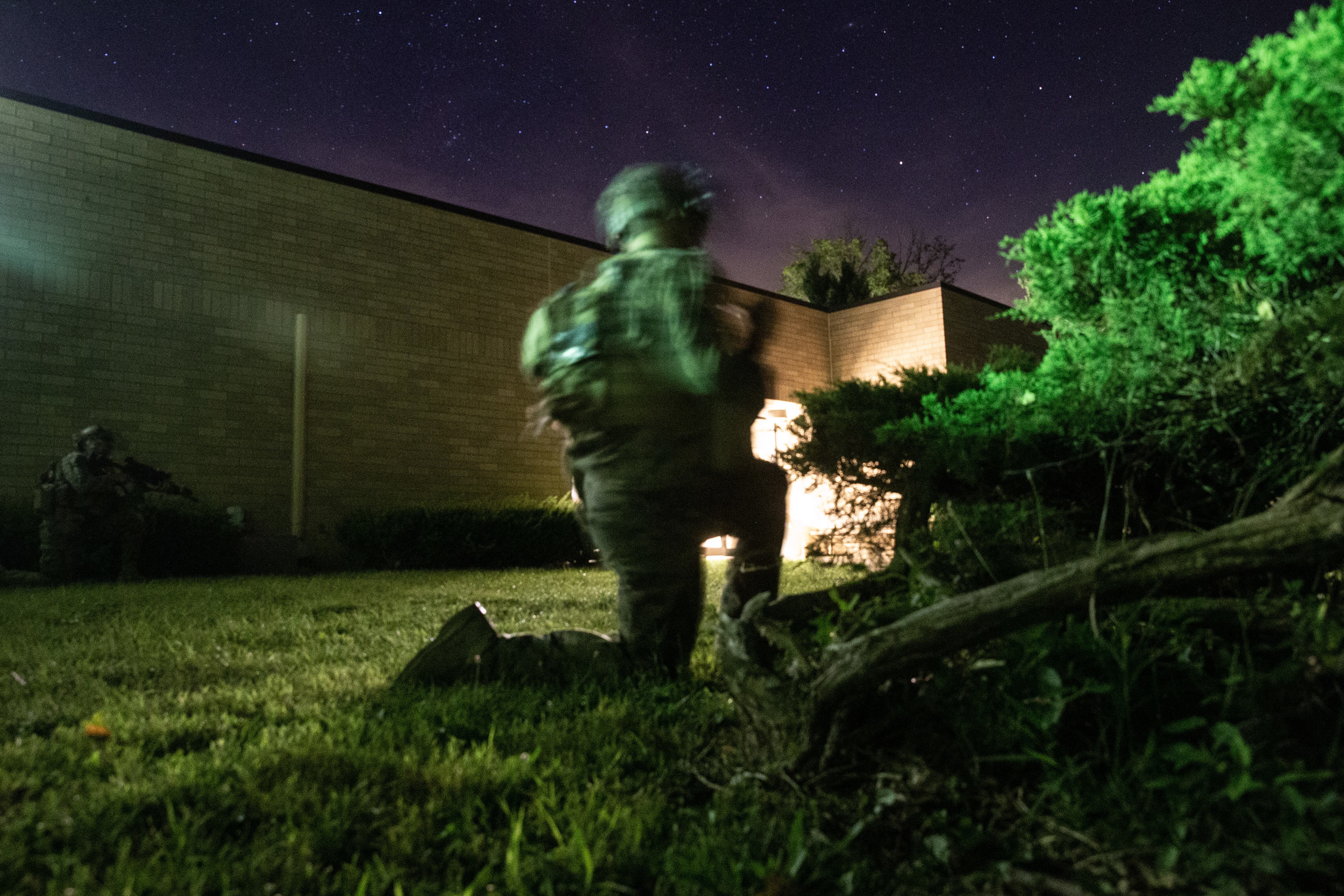
The first live-fire training event took place on Dec. 12 with Marines from 3rd Battalion, 6th Marine Regiment.
Chief Warrant Officer 2 Christopher Latham, battalion gunner, said in video provided by 2nd Marine Division that the sequencing of fires in support of maneuver, all the timing and sequencing is one of the more challenging tasks of a Marine infantry company.
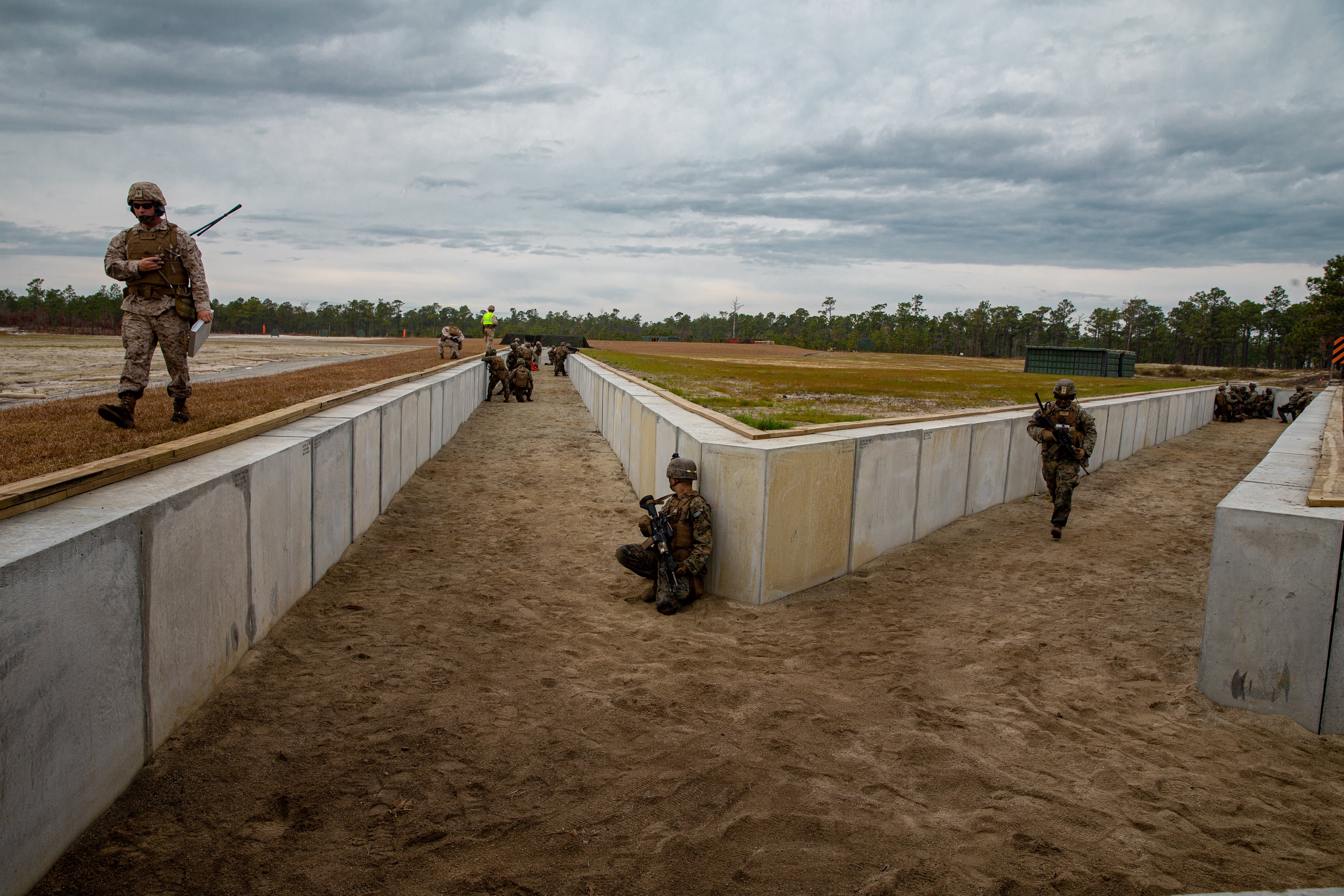
“There’s really no comparison of this range to others,” he said. The space and obstacles, having 180 Marines maneuvering through an open area, in the tree line, across trenches gives Marines the whole training package.
McCullar told Marine Corps Times that he and his range design team got to work with a kind of clean slate. New technology acquired in recent years includes robot targets that can be controlled and even programmed to move more realistically, reacting to fire and moving to different locations, even mounting “counterattacks” against Marine units.
The previous Range 6 had pop-up targets that required electrical lines and communications lines to run and then limit where targets can be placed, essentially making the range fairly static, McCullar said. A squad member hitting the range for one deployment is going to come back to the same scenario a few years later for a follow-up training cycle.
The new range has been renamed Golf-36.
The original design also lacked the realistic feel of an actual objective assault. Due to its design, it was “really limited” he said. Basically, it included a single access attack, a full-frontal assault. “And we don’t do business that way.”
Marines would seize one objective, travel back along a road, seize another then travel back and seize the third objective.
The new, mobile robot adversaries, or “trackless motorized infantry targets,” gave designers a way to reimagine the range that didn’t rely on static, pop-up targets. Another technology has improved safety and given Marines more realistic ways to maneuver, and that is a “shock-absorbing” concrete that eliminates ricochets.
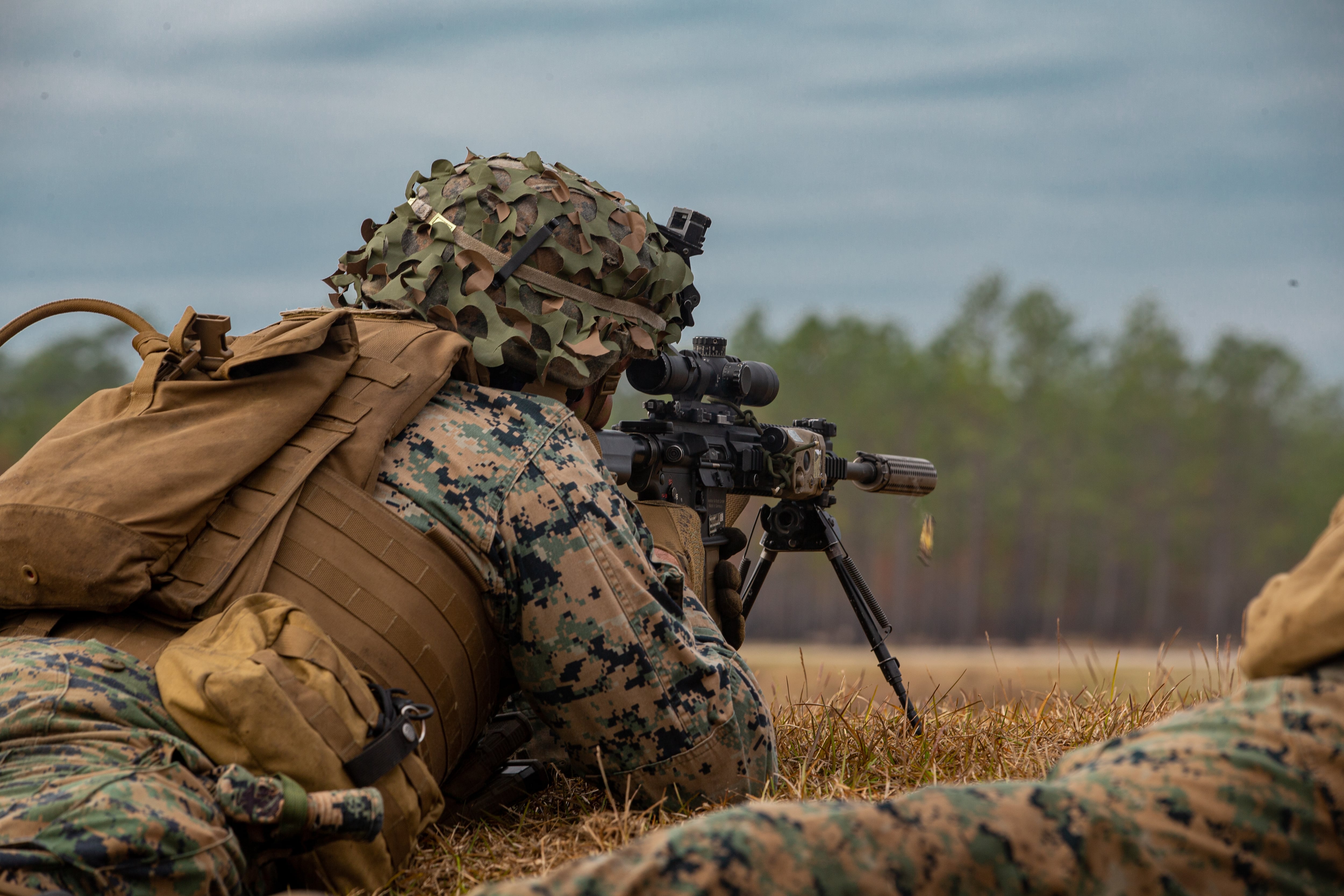
The robots have been in use for at least the past year and are adaptable to any live fire range on the base, McCullar said.
The material allows for Marines to fire from a variety of positions without risks and reduces wear and tear on the range that old, wooden fortifications sustained when taking repeated small arms or heavy fire.
These additions and some new methods create new scenarios, creating a kind of dynamic range that can give commanders a new look and new way to solve problems when training.
Freeing up the ways Marines could approach the range gave designers wider latitude to create reinforced trenches for robot counterparts to hide behind but also provide cover for the assaulting force.
It allowed them to incorporate an approach through the nearby woods so Marines can face those obstacles and have more creative attack solutions.
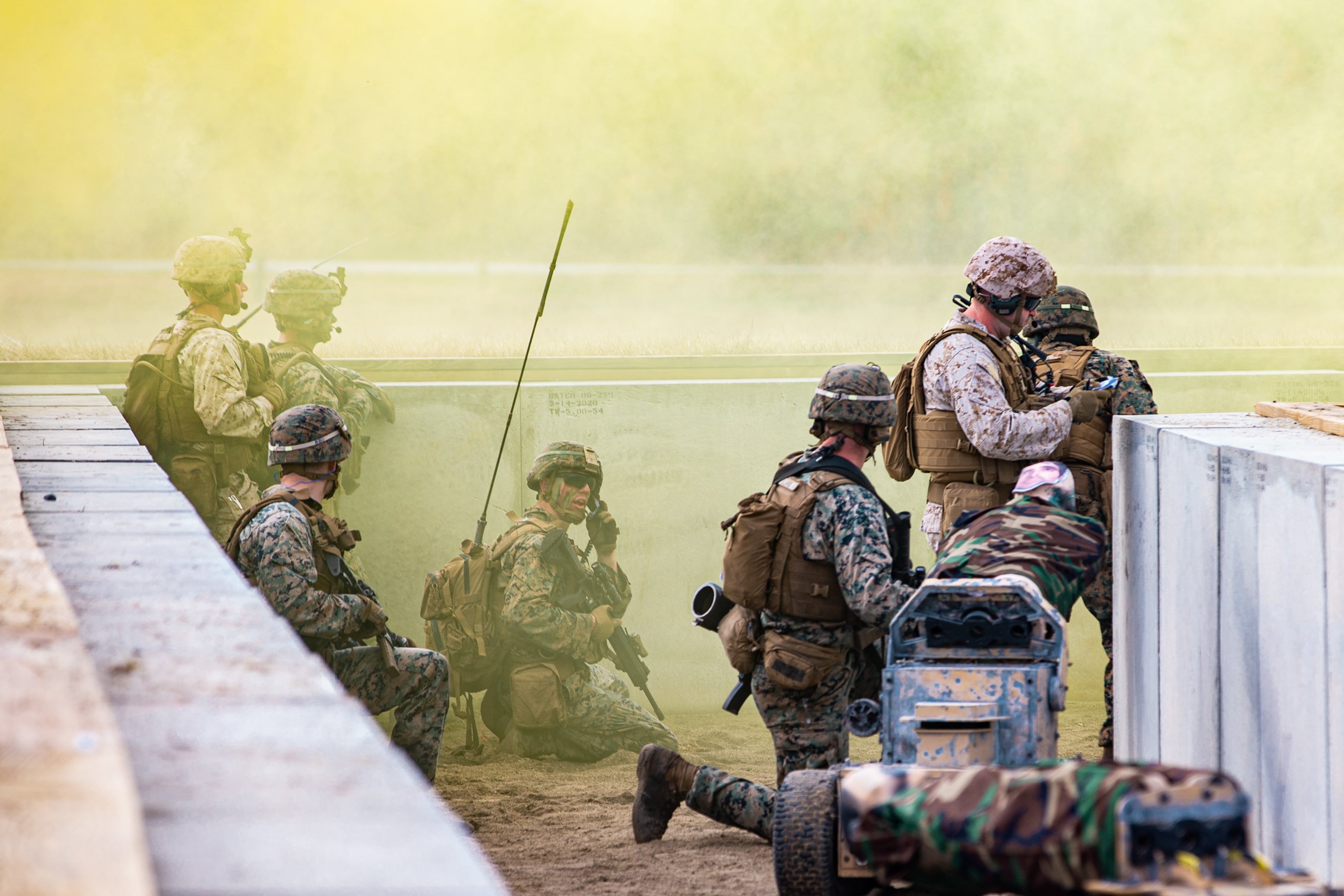
“I believe this range will become the culminating event for 2d Marine Division’s Marine Corps Combat Readiness Evaluation (MCCRE), which evaluates units deploying forward into harm’s way,” said division gunner Chief Warrant Officer 5 Joshua Smith. “One of the hardest actions for a unit to conduct is live-fire and maneuver at night.”
And that is the goal, for the range to be used in a company-sized live-fire maneuver at night.
They also widened the footprint of the range. The old Golf 6 range was slated as a company-sized, live-fire assault range and stood at about 1,000 by 900 meters in size. The new Golf 36 is 1,000 meters by 1,500 meters and units scheduling the range also get adjacent ranges, Golf 27, 27a, and 28. That allows for supporting mortar fire from the adjacent ranges to be included in the attack.
“One of the unique things about this range is that we incorporated the environment. Typically, on most live-fire ranges, the trees are removed and the grass is cut in order to allow for the safe execution and supervision of live-fire training,” said Smith. “G-36 adds the environment as part of the problem. In parts of the range, the trees play into the problem, as it is harder to see some of the enemy – just as it would be in real life.”
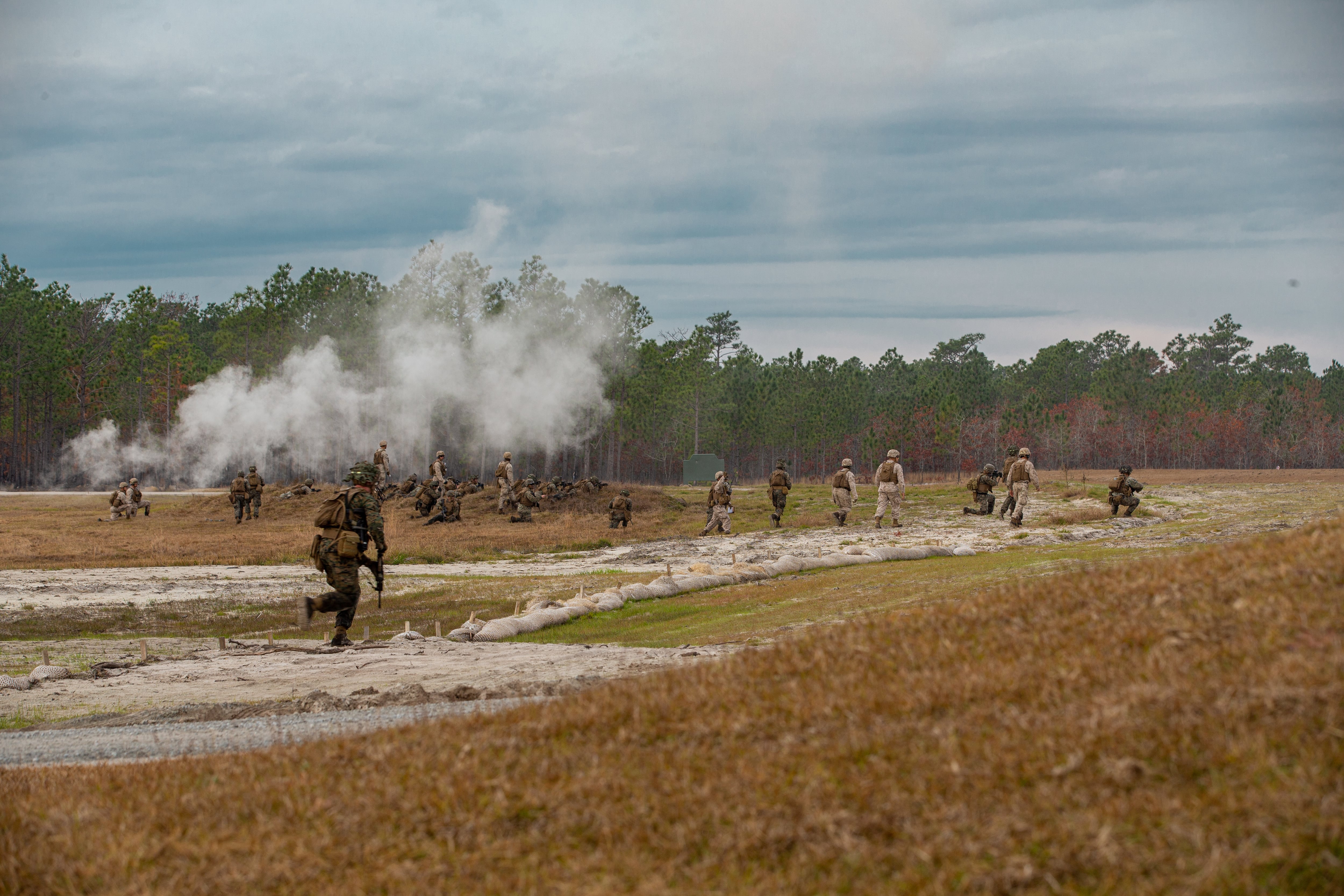
The range overhaul was done using Marine units, the colonel said. Units such as 2nd Combat Engineer Battalion and 8th Engineer Support Battalion along with others. That work started in June this year and was finished by October. McCullar said the project cost an estimated $2.3 million but could have cost four to five times as much if done with non-military assets.
Not far from the ranges lies the beach and helicopter landing zones. With coordination, units can assault by sea, moving overland or hit the landing zones by helo before hoofing it to the attack.
Marines will still progress through smaller unit phases at other ranges before combining their skills on this culminating range. But before that kind of culminating, realistic training required a trip out to the Marine Corps Air Ground Combat Training Center at Twentynine Palms, California or to Army facilities such as Fort A.P. Hill, Virginia, or Fort Stewart, Georgia.
The time and money saved staying in their own backyard offer their own benefit, McCullar said.
“At the end of the day, this increases the MEF readiness. Infantry companies and battalions can train locally on Camp Lejeune, get the required training, integrate all organic weapons, utilize robots to aid in that training,” McCullar said.
Todd South has written about crime, courts, government and the military for multiple publications since 2004 and was named a 2014 Pulitzer finalist for a co-written project on witness intimidation. Todd is a Marine veteran of the Iraq War.




